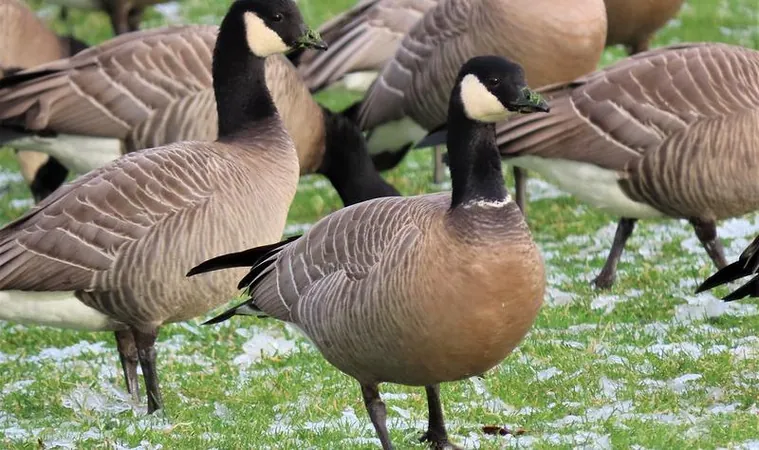
Shocking H5N1 Infection in Canadian Teen Sparks Health Investigation Amid Rising Poultry Outbreaks
2024-11-26
Author: Wei
Shocking H5N1 Infection in Canadian Teen Sparks Health Investigation Amid Rising Poultry Outbreaks
In a startling case that has health authorities on high alert, a Canadian teenager is currently in critical care battling an H5N1 avian flu infection in a British Columbia hospital. Despite extensive investigations, health officials have yet to pinpoint the exact source of the infection. However, they are uncovering concerning mutations in the virus that may have contributed to a severe lower respiratory illness.
During a recent press conference, Dr. Bonnie Henry, British Columbia's chief health officer, revealed that the comprehensive search for related illnesses has stalled. Although there have been no additional cases reported among the teen's family, friends, or other close contacts, scientists continue to study the virus for mutations and perform serology tests to identify possible asymptomatic infections.
"Our thoughts are with this young individual and their family as they navigate this critical situation," Dr. Henry expressed. The teenager, who has been ill since November 2 and hospitalized since November 8, is receiving breathing assistance but has shown some signs of progress, although they remain seriously ill.
Where Did This Virus Come From?
Investigation efforts have included thorough testing of health workers, the patient’s family and pets, as well as environmental samples with no additional infections found. Notably, tests on a pet dog that exhibited symptoms around the same time came back negative for avian influenza. Despite British Columbia experiencing 54 poultry outbreaks recently, genomic analysis revealed that the virus infecting the teen is genetically distinct from the poultry strains prevalent in the region.
The closest relatives of the H5N1 strain found in the patient are samples from cackling geese discovered dead in October in the Fraser Valley. These findings suggest there may be an intermediary source such as another wild bird, which raises concerns about the virus's transmission route.
Mutation Concerns and Potential Implications
While no further human cases have been reported, including among farm workers who are in direct contact with poultry, the identification of mutations associated with increased adaptation to humans poses a potential threat. Dr. Henry pointed out that these mutations enhance the virus's ability to bind to cells deep within the lungs, increasing the risk of severe respiratory complications.
The teenager’s infection began with conjunctivitis, rapidly escalating to a serious respiratory illness. Health officials are currently obtaining samples from the patient at various stages of the infection to monitor any changes in the virus's genetic makeup.
"This case serves as a stark reminder of the unpredictable and evolving nature of H5N1," Dr. Henry cautioned, highlighting a recent incident where H5N1 was detected in a child in California. Children are particularly vulnerable to H5N1 due to their developing immune systems.
Broader Impact: H5N1 Outbreaks in the US
The ramifications of the H5N1 crisis are not limited to Canada. The US Department of Agriculture has reported an alarming 34 new outbreaks of the virus in dairy cows, all traced back to Californian herds. With California now facing 436 outbreaks, the total for the US has soared to 650 outbreaks across 15 states, raising significant alarms for public health officials and agriculture workers alike.
As authorities continue to investigate the situation, both in Canada and the US, the potential for H5N1 to spread further remains a pressing concern. Stay tuned as we follow this developing story and its implications for public health and safety!


 Brasil (PT)
Brasil (PT)
 Canada (EN)
Canada (EN)
 Chile (ES)
Chile (ES)
 España (ES)
España (ES)
 France (FR)
France (FR)
 Hong Kong (EN)
Hong Kong (EN)
 Italia (IT)
Italia (IT)
 日本 (JA)
日本 (JA)
 Magyarország (HU)
Magyarország (HU)
 Norge (NO)
Norge (NO)
 Polska (PL)
Polska (PL)
 Schweiz (DE)
Schweiz (DE)
 Singapore (EN)
Singapore (EN)
 Sverige (SV)
Sverige (SV)
 Suomi (FI)
Suomi (FI)
 Türkiye (TR)
Türkiye (TR)